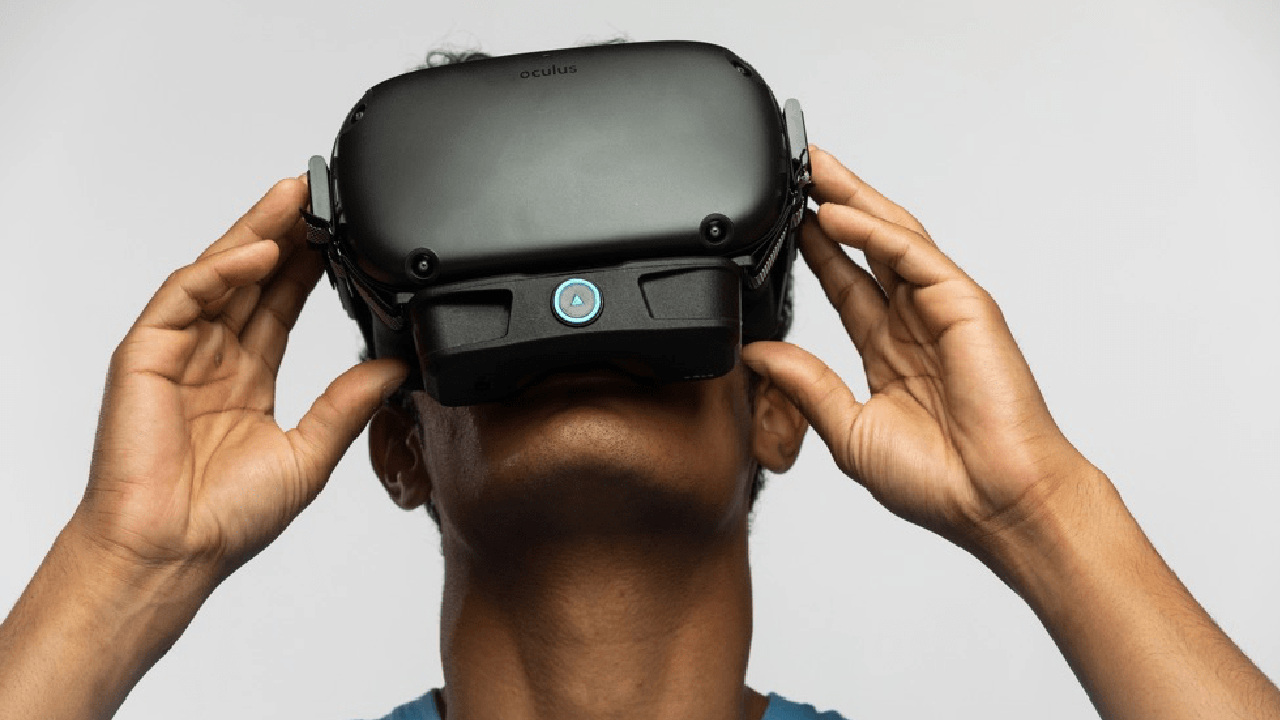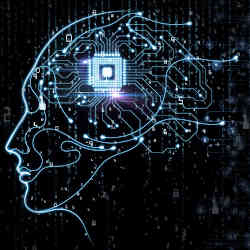The fashion designer Donna Karan once said, “Smell is the primordial sense, more powerful, more primitive, more intimately tied to our memories and emotions than any other. A scent can trigger spiritual, emotional, or physical peace and stimulate healing and wellness.”
Researchers who endeavor to create digital scents wholeheartedly share this belief and are working to make this possible in a virtual context.
“Smell is a very under-researched and a lesser-understood sense that we and many other creatures in this world share,” observes Heather Kelley, an associate professor at Carnegie Mellon University’s Entertainment Technology Center, and a game designer.
For people who like virtual reality experiences, “I think including senses other than vision and sound are important” for making those experiences richer, Kelley says.
Use cases for digital scents
In the gaming realm, a research team from Sweden’s Stockholm and Malmö universities have developed a scent machine that can be controlled by a virtual wine cellar gaming system. The player moves around the wine cellar, selects virtual wine glasses containing different types of wine, and guesses the aromas. A small scent machine is attached to the virtual reality (VR) system controller, and a scent is released when the player lifts the glass.
“The possibility to move on from a passive to a more active sense of smell in the game world paves the way for the development of completely new smell-based game mechanics based on the players’ movements and judgments,” explained Simon Niedenthal, an interaction and game researcher at Malmö University, in an article on the university’s website.
Besides gaming, digital scents can be ideal for marketing, entertainment, and training, Kelley says. In a marketing context, they could be used to evoke some sort of emotion based on a smell emanating from, for example, a restaurant or shopping mall, she says. In the entertainment realm, digital scents could be used to make movies and video games more immersive.
Virtual scents also could be used to train someone who works in a factory or in the medical or military fields to detect the smell of certain chemicals or, Kelley says, “If you’re trying to train someone to do something in real life, having the smell might help acclimate them.”
One method for creating digital scents is to use a VR olfactory apparatus that is comprised of an odorant saturation chamber with an inlet and an outlet, according to inventors at Northwestern University. Part of the odorant saturation chamber includes beads and a liquid that has an odorant concentrate.
The inlet extends into the concentrated part of the odorant saturation chamber. The apparatus also includes a mass flow controller that generates airflow to the inlet. When the airflow passes through that portion of the odorant saturation chamber, it forms an odorant. The airflow passes the odorant through the outlet of the chamber. There is also a nose chamber on the VR apparatus that is connected to the outlet and configured to receive the odorant, the inventors wrote in a 2018 patent application describing the device.
Promoting better health and well-being
Judith Amores, a senior researcher at Microsoft Research and a research affiliate at the Massachusetts Institute of Technology’s MIT Media Lab, is focused on digital scents for people’s well-being. Digital scents are “not only good for memories but our emotions, compared to other senses,” she says.
Amores wrote her dissertation on olfactory interfaces; specifically, on their use in wearable devices. She did a pilot study at MIT comparing the brain wave activity of 12 people wearing a virtual reality headset and an olfactory necklace she developed that released a burst of scent, to the brain wave activity of people who did not wear the necklace.
She found that relaxation increased by 26% among those wearing the headset and necklace, and the physiological response also increased by 25%. The physiological response was measured using an electrocephalogram (EEG) signal, and relaxation scores were computed from EEG frequency bands associated with a relaxed mental state using an entropy-based signal processing approach, Amores wrote in an IEEE paper titled “Promoting relaxing using virtual reality, olfactory interfaces and wearable EEG” that discussed the study. She also noted that this was the first VR therapy system using scent in a wearable device, which “proves its effectiveness to increase relaxation in everyday life situations.”
The challenges of digitizing scents
Amores has been conducting a study at Massachusetts General Hospital for the last year or so ago on patients undergoing cardiothoracic surgery, in which she is attempting to help reduce their anxiety both before and after surgery. Study participants are given a VR headset that monitors their brain activity, and a necklace that releases a customized burst of smell from an atomizer.
However, there have been challenges and a lot of logistics to deal with, Amores says. For example, devices get lost because patients often start off in one room prior to surgery and are taken to a different room post-surgery.
A survey also revealed that people don’t like to use wearable devices overnight, she adds. As an alternative, the atomizer can be attached to a gooseneck fixture (something usually curved like the neck of a goose, or U-shaped), close to the nose. Another issue is that many patients share rooms and some have allergies, so the scent has to be very localized. In that instance, people prefer to have an olfactory device attached to their glasses, Amores says.
There are many ways to deliver digital scents, depending on the application. In Amores’ case, she likes using an atomizer, given her interest in applications related to health, and “ideally, you want to keep compounds as natural as possible.” The atomizer is basically a disc that vibrates at a high frequency and when it comes in contact with a textile, it releases a small droplet, similar to a humidifier.
In the future, Amores sees the potential for embedding such an atomizer in pajamas and other clothing.
Yet another challenge is the difficulty of replicating the enormous discriminatory capacity of natural olfactory systems, observes Vanessa Ruta, a professor at Rockefeller University, who does not work on generating virtual scents, but is interested in the challenge of odor detection via e-noses of the olfactory system. She explains, “The diversity of chemicals is enormous, and their physicochemical properties are not directly related to any perceptual quality in the same way that, for example, the wavelength of light relates to our perception of color,” she says.
Consequently, while there are three photoreceptors in the eyes that are sufficient to sense the entire spectrum of visible light, Ruta says, “large repertoires of olfactory receptors appear to be necessary to detect and discriminate amongst the diversity of chemicals in the environment.”
Tying virtual olfaction to memory
Jas Brooks, a Ph.D. student at the University of Chicago, is conducting historical research on digital scent technology, specifically with regard to the trigeminal nerve, which runs through the face and responds to chemicals, touch, and temperature.
“For me personally, the important aspect of digital scent is its connection to memory and enjoyment,” Brooks says. They add that digital scent “has the potential of maybe being able to change how we experience memories of each other.”
In a virtual reality context, smell is “very grounding,” because in real life, people may not think much about smells, which have to compete with visuals and sounds, they say. “But when an odor hits you, it grabs all your attention and it’s so engaging, and that quality can be brought to virtual reality.”
Brooks is working on reproducing scents using electrical stimulation. “I’m curious about how you digitize smell on the output side,” they said.
Like a printer, you need a cartridge of basic smells that can be combined, and finding those basic smells is an open challenge in the field. “One of the things I’ve been exploring is, can you actually digitize the stimulation side without chemicals and produce the sense digitally,” Brooks says. They are interested in reproducing a limited palate of digital scents–things like the sharpness of vinegar, the bubbliness of champagne, and the refreshing scent of peppermint.
“You have the technology getting better and … developing very rapidly, and at the same time, a more fundamental understanding of how smell works, and how we interact with odors, whether it’s odors in real life, or how we use smell to potentially ignite our memory,” they said.
Other work being done in this area includes a wireless, skin-interfaced olfactory feedback system that was recently unveiled by a team of researchers at City University of Hong Kong (CityU), which releases different smells using miniaturized odor generators. The idea is to integrate the odors into VR and augmented reality systems to provide users with a more immersive experience. This can be applied to 4D movie watching (the ability to access the 3D dimension without any spatial restrictions), medical treatment, and online teaching.
In terms of the most popular digital scents, while Amores says it depends on demographics and culture, her own research has shown that vanilla and lavender are popular with most people. “There seems to be something intrinsic in human nature-—probably related to olfactory receptors—on what we perceive as pleasant,” she says.
Echoing Brooks, Amores says that “Olfaction is so good for memory.” Creating digital scents can be useful for people suffering from dementi, a and those who lost their sense of smell as a result of being infected with COVID-19. “Smells are very connected to memory; you remember particular smells from your past.”
We don’t usually consider the full potential of the sense of smell, and there is so much that can be done with digital scents, Amores says.
Creating smells in virtual reality “is socially interesting,” she adds. “It grounds either the environment you’re in or the objects you’re interacting with.”





Join the Discussion (0)
Become a Member or Sign In to Post a Comment